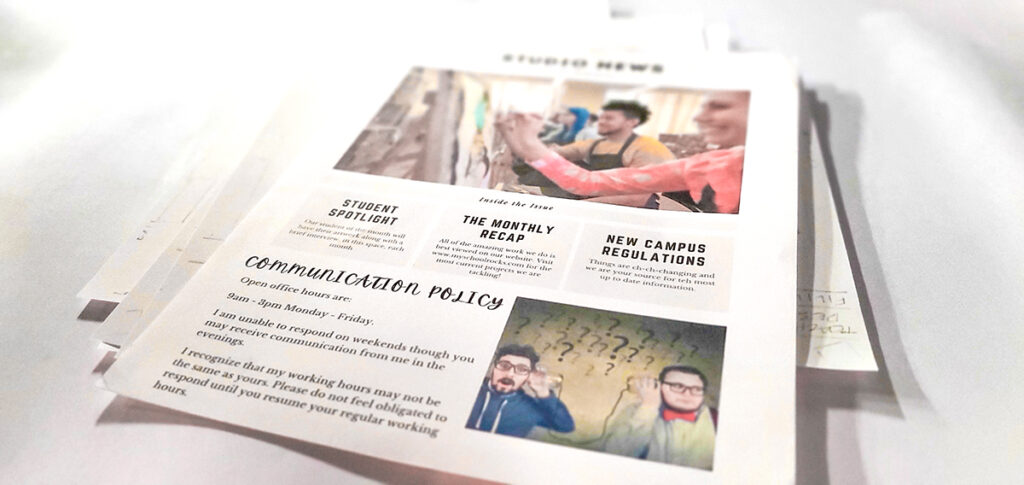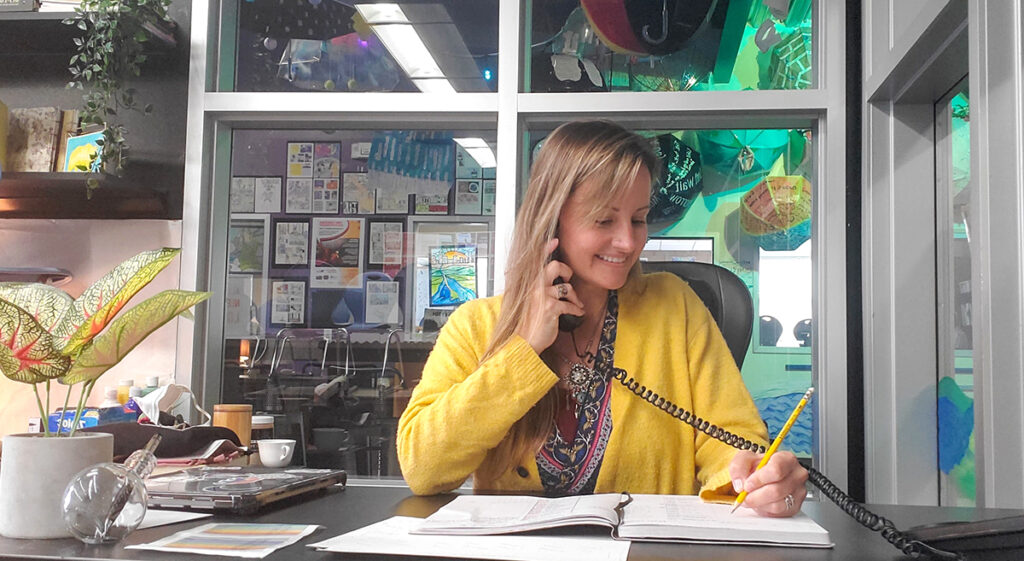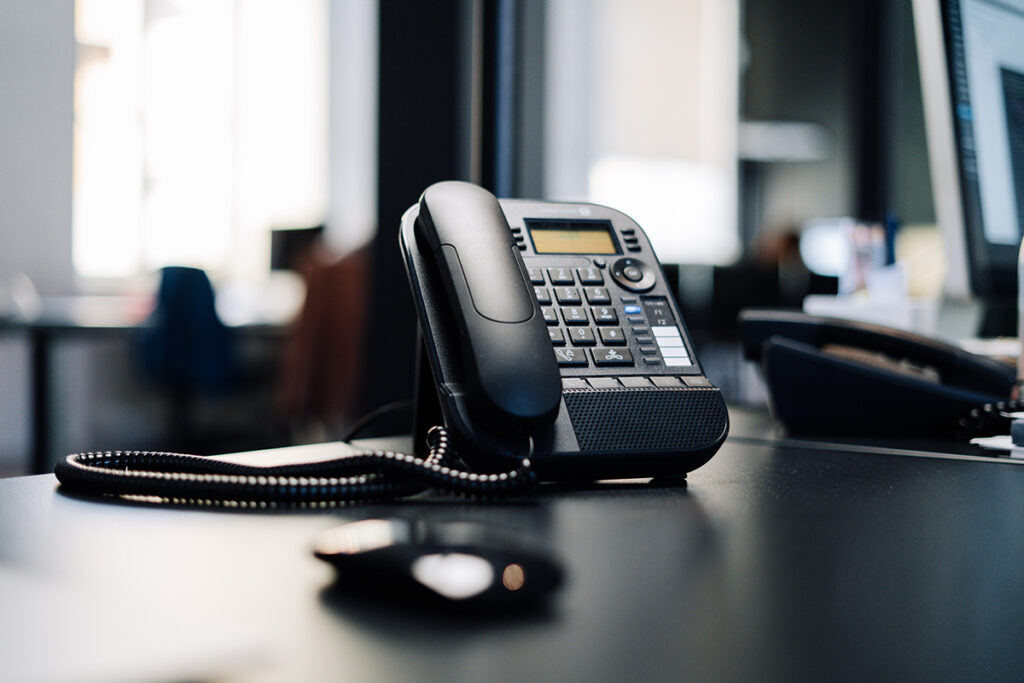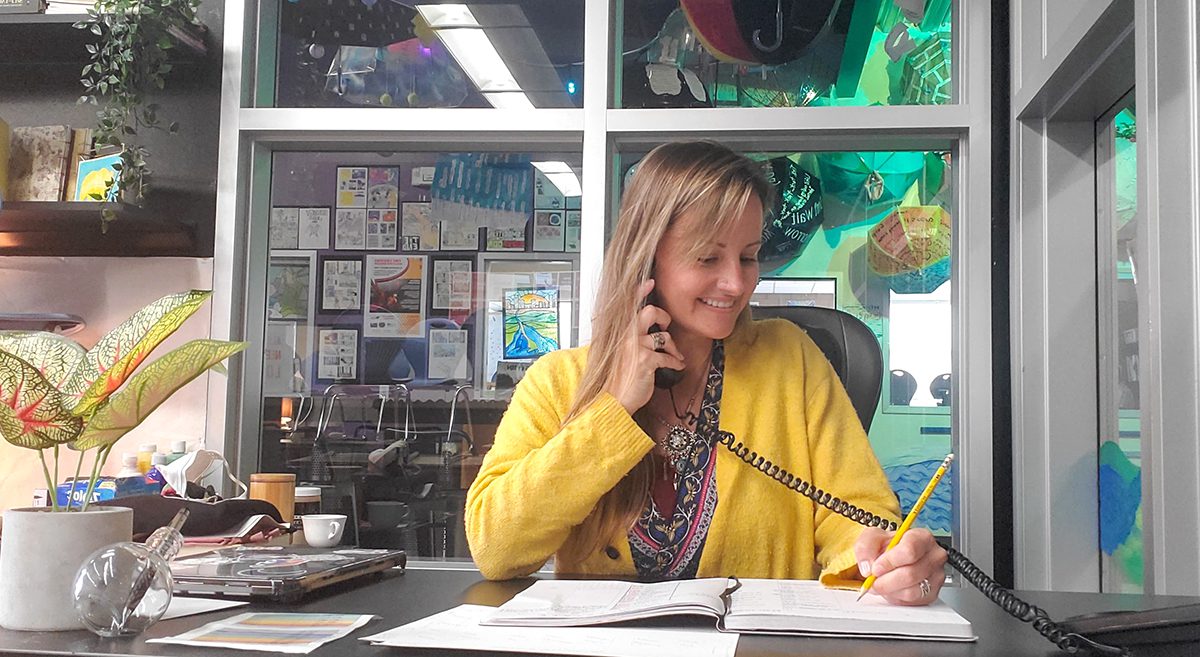From sending progress reports to messages about performance or behavior, we communicate with caregivers daily. Sometimes you will need to reach out to a student’s caregiver, or their caregiver may reach out to you. Research shows that parental involvement correlates with student performance. It also shows that communication focused on improving behaviors has the most significant impact. According to Cotton and Wikelund, researchers discovered, “the more active forms of parent involvement produce greater achievement benefits than more passive ones.” Active forms of parent involvement can include talking to their students about their artwork, encouraging them to join your art club, or volunteering to help set up your art show. The more caregivers directly engage, the better.
Unfortunately, sometimes calling or emailing home prompts a negative or defensive response. This can make a conversation more challenging. Don’t fret! It is important to keep the research about parent involvement in mind. Sharing strategies with caregivers about actively participating in school is a helpful tool, especially if the conversation turns difficult. Taking the time to discuss how they can become involved is one way you can build the relationship and make the chat more productive. With some preparation and guidance, you can turn the tone around and have a successful talk.
Let’s take a look at 6 strategies to increase productive interaction with caregivers.

1. Prioritize connection.
Taking the time to get to know your students and their home dynamics can prove invaluable. When students and their families know you are invested in them, they will be receptive to more difficult conversations later. Because we have hundreds of students on our rosters, it is unrealistic to connect deeply with each student. The good news is that there are still ways to create meaningful connections.
Here are 4 suggestions:
- Be present at school events.
Back to school night, orientations, open houses, and any family-facing events leading up to and through the first few weeks of school are great opportunities to introduce yourself. Whether or not you speak directly with students and families from your classes, you demonstrate that you are available and approachable. - Plan team-building activities for the first day and week of school.
These games allow students to break the ice with each other, learn about you and their classmates, solve problems, and build community. Your observations of how students engage with the activities and each other will help you better understand them. - Create a brave space for students to share with you.
Design lessons that allow students to tell you about them. Have them write a letter or draw an illustration with the prompt, What I Wish My Teacher Knew. - Implement one-on-one check-ins during class.
Conduct individual check-ins while the rest of the students engage in independent studio work. Take time to connect individually and offer your full attention to the student about anything they wish to share.

2. Recognize the wins.
Establishing a positive rapport now will help you gain the confidence of families, establish trust, and open the doors for communication down the road if a challenge presents itself. To that end, never underestimate the power of the positive note, phone call, or email home. Parents and students want to hear from you when things are going right—not just when a concern arises.
Set goals for following through with whole-class and individual family communication with the following ideas:
- Make “sunshine” phone calls weekly.
Aim to speak to each household twice per year to say how outstanding their student is. Select one or two families each week to focus on. - Update your class website or social media platform.
Highlight productive discussions and project progress. Praise students for their efforts with examples of student work and photos of students in action! Be sure to comply with your district’s policies on sharing photos of students and their work. - Send monthly newsletters.
Spotlight selected student artists and keep parents up to speed about what’s happening in your room. - Handwrite notes to students.
This lets them know that you have observed their growing skills or appreciated how they handled a situation. Tell them how proud of them you are! - Emphasize the good.
The suggestions in this list are to focus on the wins you see with students in your classroom. Keep them positive and reach out separately with any concerns.

3. Check-in with a colleague.
Connecting with your colleagues before contacting families is a great strategy. You can apply their insight to your communication. Elementary classroom teachers have established closer relationships with their students’ households. At the secondary level, a colleague may have had a student or a sibling for multiple years. Confidentially chatting with other teachers can also tell you if an issue is isolated to your classroom or is a broader concern.
It can also be helpful to find out who the primary caregiver is, how involved the caregiver typically is, and if caregivers who maintain separate residences require separate phone calls.
4. Prepare for the conversation.
Starting on day one, maintain digital or physical folders for your students. The goal is to paint a holistic picture of your student that tells the story of their home life, what makes them feel successful, what they struggle with, and how they prefer to learn.
These records can include data collected from the student directly, such as:
- A Getting to Know You or All About Me lesson
- Portfolio development examples
- Written reflections
- Rubrics, tests, formal/informal assessments
You may also aggregate information from colleagues and administration such as:
- Attendance reports
- Contact logs
- Action plans
- Behavioral observations
- Notes about family interactions
- Individualized education plans (IEPs) and 504 plans

Focus on building relationships and inviting conversation as a two-way street with parents and caregivers. They should feel reassured that contacting you with concerns, questions, suggestions, and praise is welcome! You can help to establish this through a brief introductory email or newsletter.
Model your expectations for boundaries and tone, including the following in your introductory communication:
- Be authentic.
Express your joy to be their teacher and excitement about the year ahead. Include some background about who you are so they can get to know you too! - Get to the point.
Briefly touch on what students can look forward to doing in your class. What big ideas, projects, mediums, and skills will you tackle? - Include a communication policy.
Indicate office hours and when families can expect a response from you if they have missed you. If you tend to catch up during “off hours” like evenings and weekends, you can include a statement under your email signature which acknowledges this information. For example, “My working hours may not be the same as yours. Please do not feel obligated to respond until you resume your regular working hours.” This is a respectful reminder that communication goes both ways.
5. Make the call.
Have your student files available and maintain a digital log or paper trail documenting each communication attempt. This is a best practice because it keeps you organized and provides a record of your efforts in the rare event there is a bigger issue. Include the reason for your call, the caregiver’s response, and any final decision or next step. in the log

Prior to making the call, consider the following as part of your script:
- Open with positivity.
Convey a compliment, story, or pleasant interaction with the student to ground the conversation and set the tone for the remainder of the call. - State the specific reason you are calling.
If you are calling with a concern or regarding a serious matter, remember the student is more than the incident or their behavior. They are whole, multifaceted people with good days and bad. Life is complex, and we often do not know what environment our student goes home to after our class. Be direct, respectful, and gentle. - Offer reassurance.
Remind the caregiver you are dedicated to solving the concern together. - Support parents with direct action.
Ask parents for feedback about what might have worked in the past with other teachers. Provide suggestions when appropriate. - Agree on the next steps.
Review any plans moving forward and who is responsible for each item. Specify when each party should follow up and encourage further communication.
Finally, consider the impact of the ongoing global pandemic and the impact it has had on us all. For some, the emotional toll may be projected onto teachers, caregivers, and school administrators. Offering positivity and patience can go a long way.
6. Redirect when needed.
It is common for caregivers to follow tangents and raise multiple points during a call or within one email. If your conversation moves off-topic, return to the goals and refocus the chat.
It is also common for a caregiver to reach out to you unexpectedly, stop you in the parking lot after school, or try to talk about their individual student at a school-wide event. It may not be appropriate, you may not have time, or you may feel unprepared without your notes. Whatever the case, it is important to address the validity of the concern while maintaining healthy, professional boundaries about when you will have the conversation.
In either scenario, be sure to insert a conclusive statement about following up, so it is clear when and how the communication will continue.
Some helpful phrases to put into practice can sound like:
- I care about this concern and want to help you address it. During this conversation, let’s focus on the reason for the call and come back to your other concern when I’ve had more time to think about it/discuss it with my colleagues/check with my administration.
- Thank you for bringing this to my attention—I was not aware of that before. I’ll make a note about this and follow up with you by the end of the week.
- This is an important conversation we should have, and I’d like to schedule a time that works best for both of us to discuss it further.
- I’m so glad you reached out. Unfortunately, I cannot help you directly, but I can connect you with someone who can. I will email and copy you to connect you both today.
- That’s a good question! I don’t know the answer, but I will speak to someone who can help and reply to you within the week.
- That sounds upsetting, and it makes sense you would like to discuss this. I can’t speak right now, but I can call you back this afternoon. Will that work for you?

We are all busy with an endless list of to-dos on our plate. Just know that a quick phone call or email can be positive and productive simply because you took a few minutes to reach out and establish a connection. Challenging conversations with caregivers are inevitable, but we hope the strategies and phrases above will be helpful when they do happen. Use them as guides to become more comfortable communicating with caregivers this year. When we are proactive and encouraging with our approach upfront, the difficult talks become much easier down the line.
For more resources on communicating with caregivers, check out the following:
- Parent Communication PRO Pack
- Positivity Notes
- How to Break Big News Before Parent-Teacher Conferences
- 5 Ways to Build Better Relationships with Parents
- Parents Don’t Have to Be the Enemy
What has been your biggest challenge when communicating with a difficult caregiver?
Which tools do you use most often to communicate positivity?
Magazine articles and podcasts are opinions of professional education contributors and do not necessarily represent the position of the Art of Education University (AOEU) or its academic offerings. Contributors use terms in the way they are most often talked about in the scope of their educational experiences.





